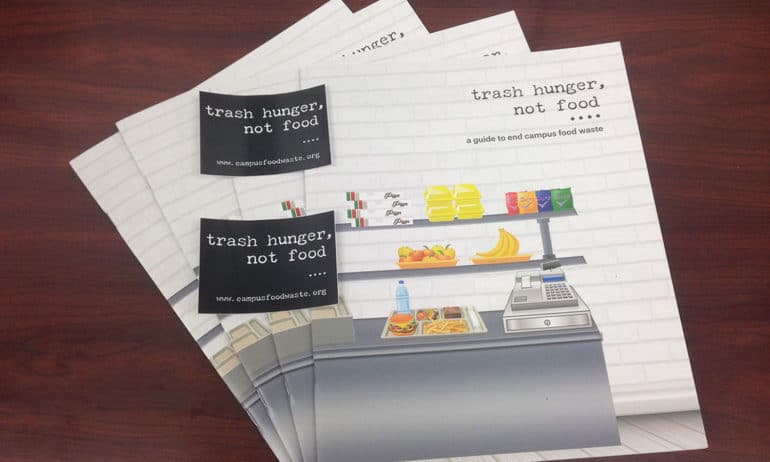 |
| Students Are Trashing Hunger, Not Food |
Specifically, university and college students are passionate and looking to make their personal futures and their future communities bright. These agents for change have the potential to impact the world in a significant and lasting way, so they are open to tackling challenges that threaten their futures.
One such issue that looms ominously for present and future generations is the problem of food waste.
Wasted food results in a loss of US$218 billion a year. In the U.S. alone, the average family wastes from US$1,365 to US$2,275 annually by throwing away food they purchased. While expensive, usable food rots in landfills, one in nine people in the world are hungry and redistributing otherwise wasted food can help people in need. The reduction of food waste is an excellent way to improve the world economically, by saving billions of dollars; environmentally, by protecting natural resources; and socially, by ensuring that food ends up on people’s plates.
While there are many organizations that aim to reduce food waste across the U.S., like ReFED and the Food Waste Reduction Alliance, few organizations work with colleges and universities directly. There are, however, 22 million pounds of food waste thrown away on college campuses annually.
The realization of this action gap encouraged Universities Fighting World Hunger and The Campus Kitchens Project, with support from The Rockefeller Foundation, to join forces and empower students to take action against food waste. The result was the creation of Trash Hunger, Not Food: A Guide to End Food Waste on Campus. This toolkit and its companion website offer resources to students who seek to reduce waste personally and at their school. For example, the guide advises students on how to reduce food waste in their own lives, how to conduct a food waste audit, and how to lobby their school’s administration for change. Additionally, there are resources directing students to seek the support of food waste-reducing nonprofits as well as how to find a job in the realm of food waste and food security upon graduation.
Because of student activism, a reduction in food waste is increasingly visible on campuses. For example, The Ohio State University has created “Zero Waste” sports venues while the University of California system is researching ways to create clean energy from cafeteria waste. There is, however, a long way to go as the average student wastes around 64 kilograms (about 142 pounds) of food per year. While reducing food waste may not be the end-all to the expansive problem of hunger, it has the potential to feed millions of people. Empowering students to reduce food waste on their campuses encourages them to go on to fight for a waste-free, hunger-free world.









No comments:
Post a Comment